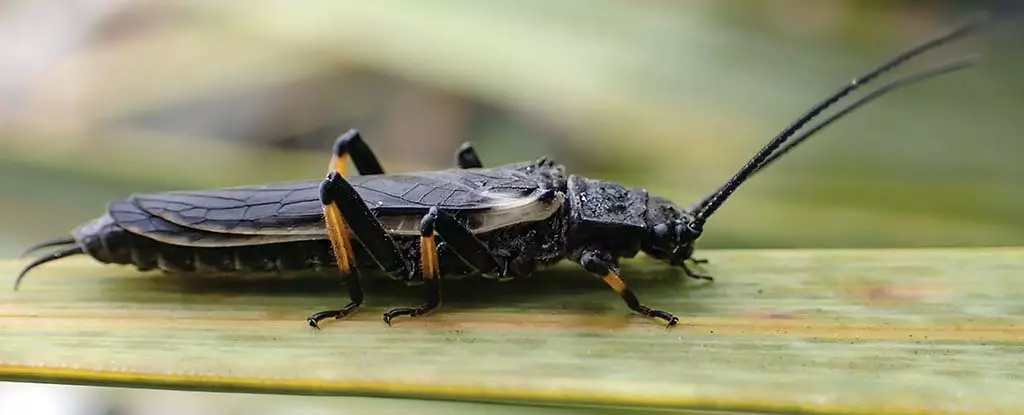The natural world is a dynamic entity, constantly subject to the influences of environmental changes. A striking example of this phenomenon has emerged from New Zealand, where the long-tailed stonefly, known scientifically as Zelandoperla, has demonstrated an intriguing ability to adapt to rapid shifts in its habitat caused by deforestation. The research conducted by scientists from the University of Otago reveals not only the resilience of this insect species but also raises significant questions about the broader implications of human-induced changes on evolutionary processes.
Zelandoperla, a native insect of New Zealand, once thrived in lush forest ecosystems where it adopted a fascinating survival strategy: it mimicked Austroperla, a toxic stonefly that produces cyanide to deter predators. This mimicry was a successful evolutionary tactic, as it allowed Zelandoperla to thrive in an environment where birds were wary of any stonefly, fearing possible poisoning. However, this ecological equilibrium began to unravel with the arrival of European settlers in the early 1800s, who brought with them extensive logging practices that devastated the forests. The consequence was a drastic reduction in the population of Austroperla, once a vital component of the ecosystem.
In the face of deforestation, the question arises: how does Zelandoperla respond to the disappearance of its toxic counterpart? The research team noted a remarkable shift in the coloration of certain populations of Zelandoperla inhabiting deforested areas. Researchers found that without the presence of Austroperla as a reference point for mimicry, some individuals adopted a darker ebony coloration instead. This change appears to be a direct response to the reduced threat from avian predators in these altered environments. By abandoning its mimicry strategy, Zelandoperla has effectively altered its appearance to better suit its new, less dangerous surroundings.
The shift in coloration among populations is not merely an isolated incident. The research indicates a broader trend: in different deforested regions of southern New Zealand, stoneflies have exhibited similar changes in their pigmentation. This adaptability signifies that certain species can evolve in response to environmental pressures, suggesting resilience in the face of rapid ecological disruption.
The study’s findings raise important discussions about how quickly evolution can occur when a species faces sudden environmental changes. The researchers utilized field observations, predation experiments, and genetic mapping to document these adaptations rigorously. In controlled experiments where they deployed models with contrasting colors, they discovered that in forested areas, birds preferentially attacked the non-mimic models. However, in deforested areas, the pressure from predators decreased significantly, showcasing that the change in habitat directly influenced predation dynamics.
This adaptation provides compelling evidence of the potential for species to undergo rapid evolutionary shifts when faced with the absence of traditional ecological pressures. Research indicates that these changes are not random but rather demonstrate predictable evolutionary patterns, wherein populations can respond similarly given analogous environmental conditions.
The case of the long-tailed stonefly underscores a crucial lesson about the impacts of human activity on natural ecosystems. While the deforestation caused by human expansion has altered habitats irreparably, it also offers a perspective on the resilience and adaptability of certain species. As shown by Zelandoperla’s shift in color and behavior, life finds a way to adjust and survive even under challenging circumstances.
As we continue to confront environmental changes driven by our actions, it is essential to recognize the interconnectedness of species and their habitats. The evolutionary response of Zelandoperla serves as a reminder of the delicate balance within ecosystems and highlights the importance of conservation efforts aimed at preserving these interconnected systems for future generations. Understanding such adaptations helps us appreciate the complexity of nature and the potential for recovery, provided the right conditions can be fostered through thoughtful stewardship of our planet.

Leave a Reply